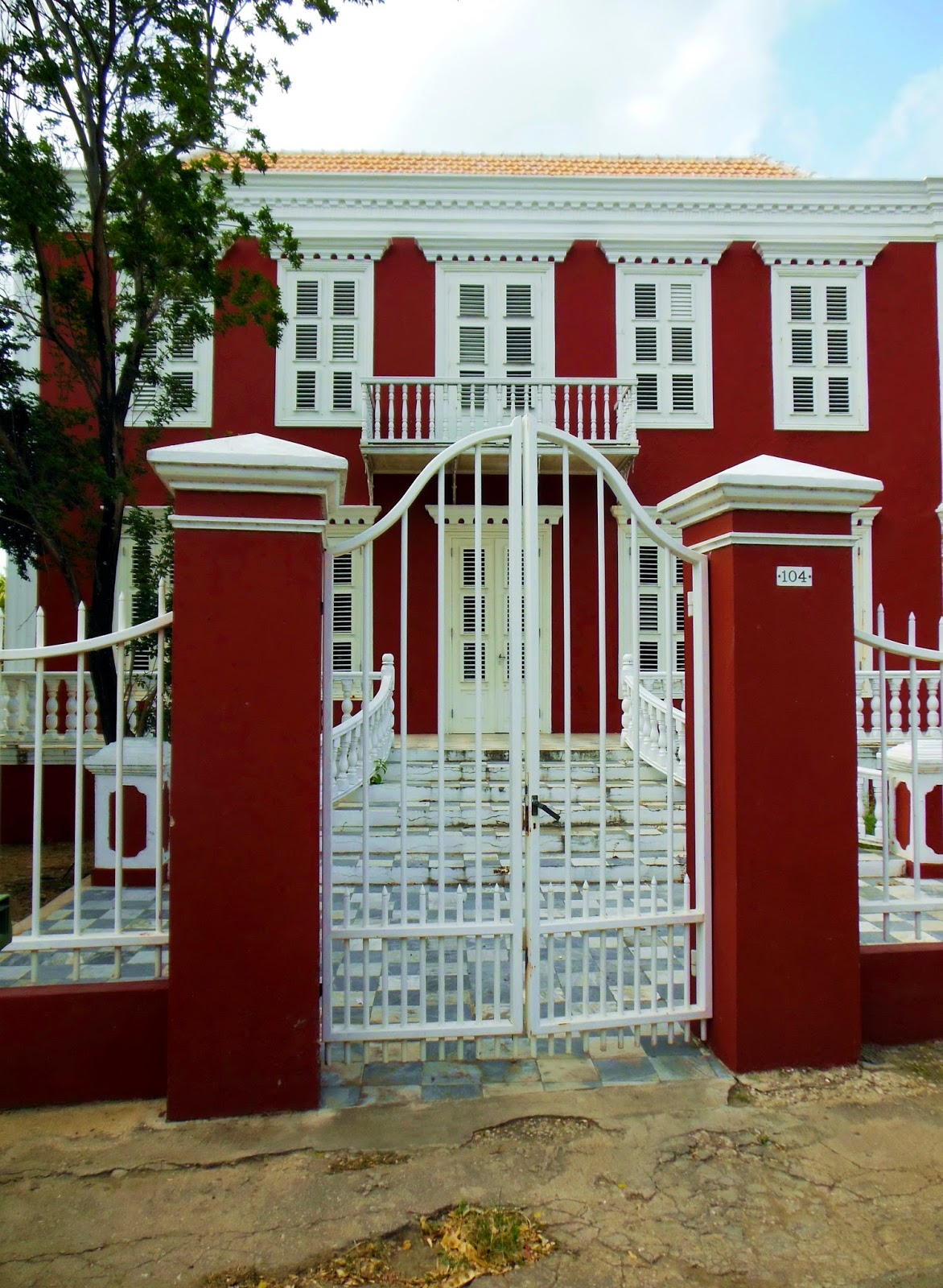We arrive in Oranjestad at 7
a.m. In Dutch, Oranjestad means “Orange Town Aruba .
Today, I am participating in the “Aruba Town & Countryside”
tour. Our first stop is Casibari Rock
Formations. Here a cluster of gigantic
rocks are right in the middle of the desert. Climbing the 50+/- stone steps is fun
and a little adventurous. The steps are
uneven and there is a short stretch where you need to watch your head. At the top is a 360 degree view of the
surrounding area. A different set of
stairs takes us back down to the Garden area.
Stairs to Overlook
Coming to the Top
View from Top
Stairs Going Down
There are a few paths winding through the garden. Established
trails, steps, and railings provide a sense of security but caution is still
advised. Next to the Natural Bridge ,
the Casibari Rock Formations is the second most popular tourist attraction in Aruba .
Garden Path
A Rock Formation
Our tour continues to the natural bridge on the northeast shore. Unfortunately, Aruba ’s
largest natural bridge collapsed in 2005 but nearby “Baby” Bridge is still a
tourist attraction. Small piles of stones (like cairn markers) dot the
landscape. However, these are not trail
markers but are "wishing stones".
We are told we can make our own but not to disturb those already done. The waves crash relentlessly against the
rocky and rugged coastline.
“Baby” Natural
Bridge
“Wishing Stones"
Aruba’s Rugged Coastline
Back on the main road, we go
through the town of Noord
Alto Vista Chapel
Our last stop is the California
Lighthouse. The lighthouse is 100 years old and is undergoing some restoration
work. When it is completed, visitors
will be able to go inside the tower. But
for now, we have access only to the outside of it. The tower is 100' high and the former
lighthouse keeper quarters have been made into a high-end Italian restaurant
with a covered open terrace overlooking the sea.
California Light & Restaurant
California Lighthouse
On our way back to the ship, we pass by the
high-rise resorts. The white sandy beaches are dotted with
thatched roof umbrellas.
Beach Umbrella
Resorts Line the Beaches
A little before 5 p.m.,I
photograph our departure from Deck 9 at the bow of the ship.
Leaving
Oranjestad, Aruba
For more information on Aruba , click on the following link:











